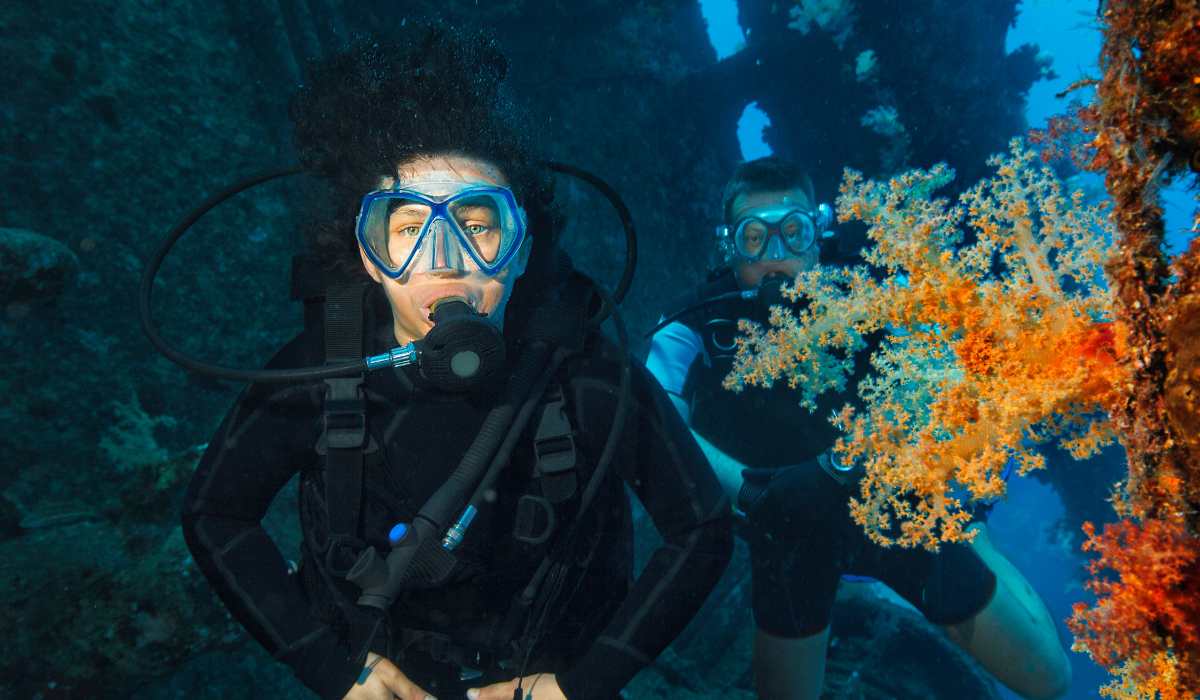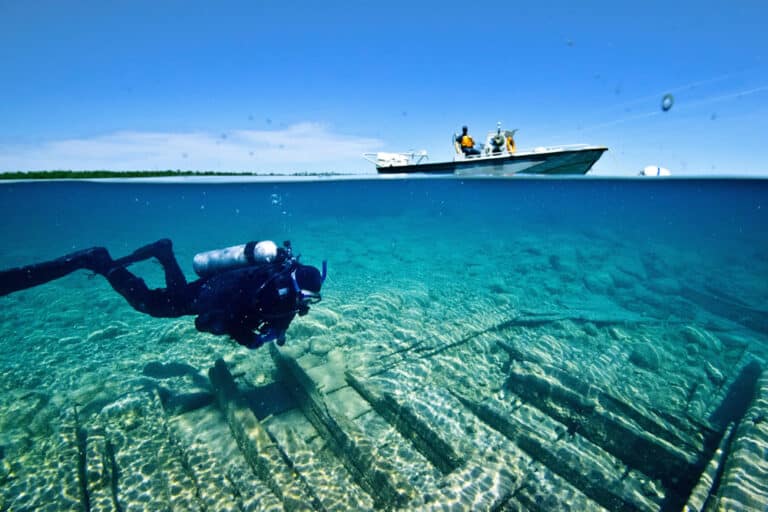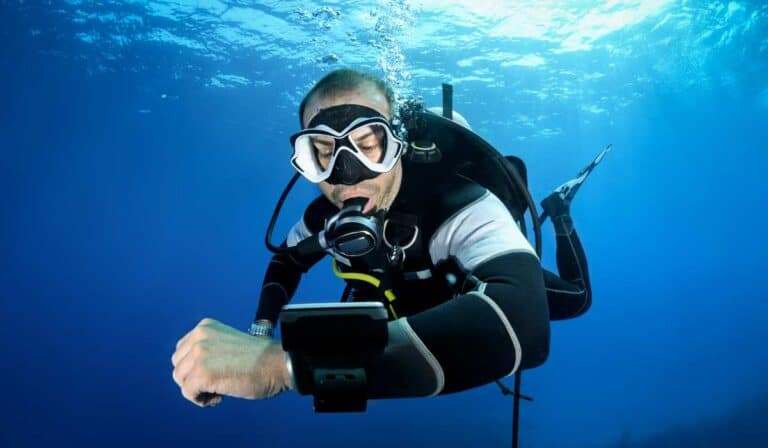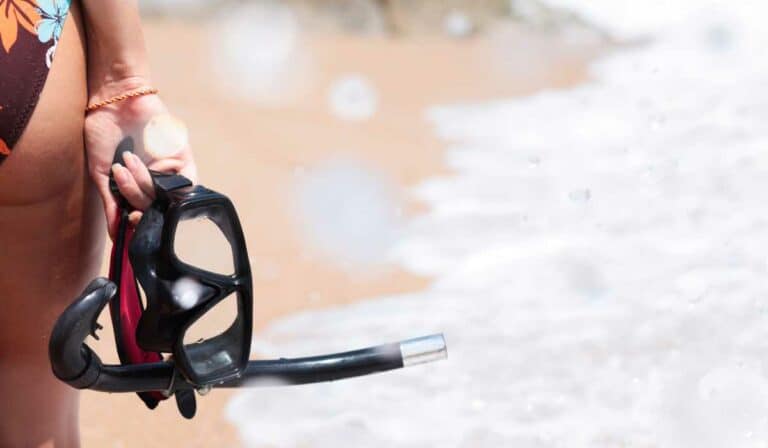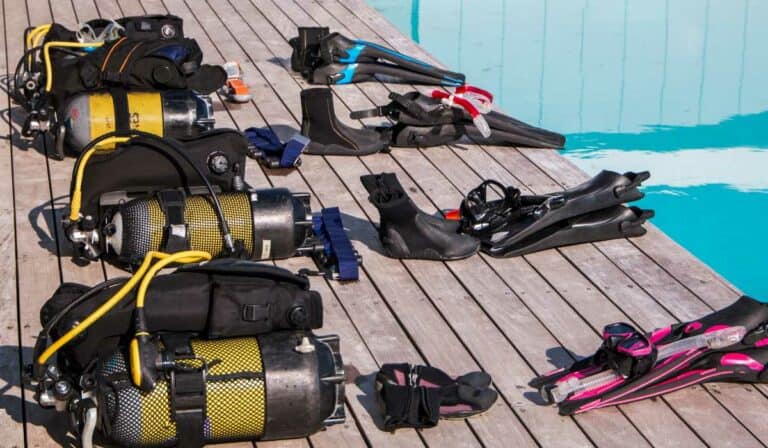The Magic of Scuba Diving – A Beginner’s Guide
In this guide, we’ll explore the depths of the underwater world and provide you with all the knowledge necessary to embark on your scuba diving journey. Drawing from years of experience, I have gathered valuable insights that will help make your first dive a memorable one.
In this comprehensive guide, we will cover topics such as understanding scuba diving costs, assessing risks and safety, getting certified, choosing locations for beginners, selecting gear and equipment, navigating underwater hazards, and mastering dive techniques. Each section of our “Scuba Diving – A Beginner’s Guide” is designed to give you a solid foundation in diving skills so that you can confidently embark on your journey into the deep blue sea.
Table of Contents
1. Understanding Scuba Diving Costs
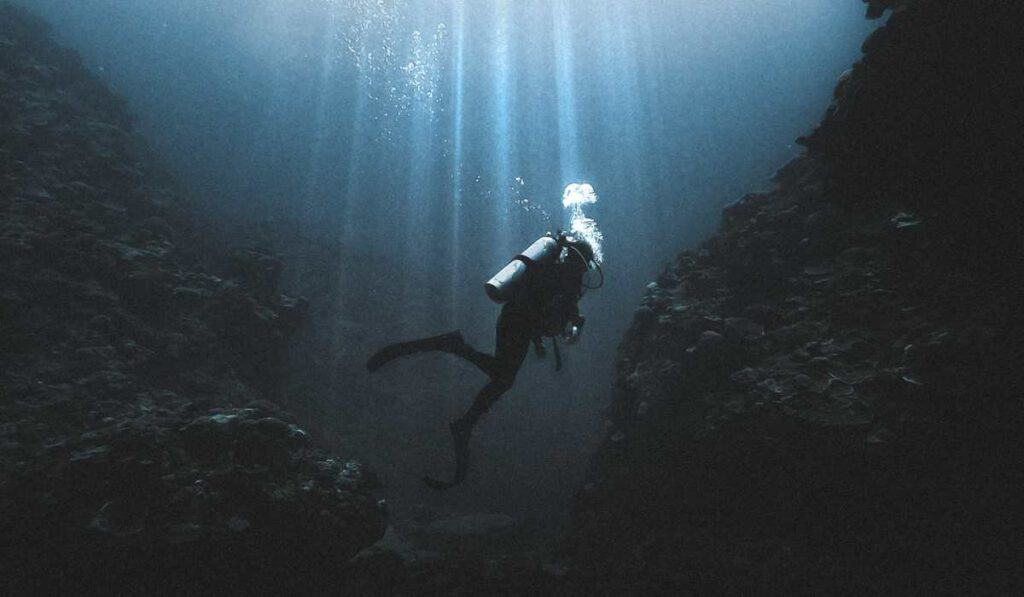
Comprehending the costs associated with scuba diving is paramount before taking the plunge, especially for novice divers. This section will look at the financial aspects of scuba diving for beginners, outlining some potential costs.
A. Course and Certification Fees
The first step towards becoming a certified diver is enrolling in a scuba diving course. These courses typically range from $300 to $600, depending on your location and chosen certification agency (such as PADI or SSI). This fee usually covers classroom sessions, pool training, open water dives, and rental equipment for these initial dives.
B. Gear and Equipment Expenses
Investing in quality gear is crucial for ensuring safety and comfort during your underwater adventures. While some items like masks, snorkels, and fins can be relatively affordable ($50-$200), other essentials such as wetsuits/drysuits ($100-$1,000) or regulators ($200-$800) might require more significant investments. To help reduce upfront costs without compromising on quality:
- Rent equipment initially until you’re confident about pursuing scuba diving long-term.
- Purchase used gear from reputable sources after a thorough inspection.
- Look out for sales or discounts at local dive shops or online retailers.
Click here to read about Jamaica Scuba Diving Guide: Dive into the Best Underwater World
C. Dive Trip Expenses
Your first few open water dives will likely take place locally during your certification process; however, exploring new dive sites can be an exciting part of your scuba journey. Costs for these trips can vary greatly depending on factors such as:
- Destination (local vs international)
- Type of accommodation (budget vs luxury)
- Transportation expenses
In addition to these primary costs, you should also consider other potential expenses like insurance, ongoing gear maintenance or replacement, and continuing education courses to advance your diving skills.
While scuba diving may require a considerable initial investment, the unforgettable experiences, and underwater discoveries make it well worth the cost for many enthusiasts. By understanding the various expenses involved and making informed decisions about equipment purchases and trip planning, you’ll be better prepared to embark on this thrilling adventure without breaking the bank.
Scuba diving can be pricey, so it’s wise to consider the outlay for gear and instruction prior to taking a dive. Assessing risks and safety is essential for any activity involving water or heights, but especially when scuba diving as you are operating in an environment that is foreign to humans.
Key Takeaway:
Before taking the plunge into a scuba diving experience, it’s essential to factor in associated costs. Course and certification fees range from $300-$600, gear expenses vary greatly depending on the quality and type of equipment needed, and dive trip expenses can include destination costs like accommodation and transportation.
2. Assessing Risks and Safety
Comprehending the possible dangers linked to scuba diving is indispensable for ensuring a secure and pleasurable experience beneath the waves. It is paramount to recognize the potential dangers and adhere to safety protocols in order to mitigate any risks associated with scuba diving, making for a thrilling yet secure experience.
A. Decompression Sickness (DCS)
Decompression sickness, also known as “the bends,” occurs when nitrogen bubbles form in your body due to rapid changes in pressure during ascent from a dive. To avoid DCS, always ascend slowly, perform safety stops at appropriate depths, and adhere to no-decompression limits.
B. Barotrauma
Barotrauma refers to injuries caused by changes in air pressure affecting various body parts such as ears or lungs while diving. The most common type is ear barotrauma which can cause pain or even damage if not managed properly during descent and ascent. Learn how to equalize your ears effectively using techniques like the Valsalva maneuver or swallowing frequently.
C. Running Out of Air
- Monitor your air supply regularly throughout the dive.
- Dive within your training limits and never exceed them.
- Maintain good communication with your buddy about air consumption rates.
- Familiarize yourself with emergency procedures like sharing air with a buddy using an alternate air source (octopus).
Click here to read about Is Scuba Diving Dangerous? Exploring Risks and Safety Tips
D. Diving Buddy System
The importance of having a reliable dive buddy cannot be overstated. A good dive buddy will help you stay safe by assisting with equipment checks, monitoring your air supply, and providing support in case of an emergency. Always follow the buddy system while diving.
E. Marine Life Hazards
While most marine life is harmless, some creatures can pose a threat if provoked or mishandled. To avoid injury:
- Maintain a respectful distance from all marine life.
- Avoid touching or disturbing any animals or plants.
- Keep your distance from potentially perilous aquatic creatures, e.g., sharks, stingrays, and jellyfish in the vicinity of where you’re diving.
F. Educate Yourself
To further enhance your safety underwater, consider taking additional scuba courses like rescue diver training or first aid certification (e.g., Emergency First Response). These courses provide valuable skills that could save lives during emergencies. Visit websites like PADI to find out more about available courses near you.
In summary, understanding the risks associated with scuba diving and following proper safety guidelines are crucial for ensuring a fun and secure experience underwater. Stay within your limits, adhere to recommended procedures at all times, and never stop learning new skills.
Assessing the potential risks and safety involved in scuba diving is essential for a safe, enjoyable experience. Therefore, the next step for any beginner diver should be getting certified.
Key Takeaway:
Realizing the potential dangers associated with scuba diving is essential to having a secure and enjoyable experience. These include decompression sickness, barotrauma, running out of air, and marine life hazards. To minimize these risks, follow safety guidelines such as ascending slowly to avoid DCS, monitoring your air supply regularly throughout the dive, and maintaining good communication with your buddy about air consumption rates. Additionally, consider taking additional scuba courses like rescue diver training or first aid certification for added safety underwater.
3. Getting Certified
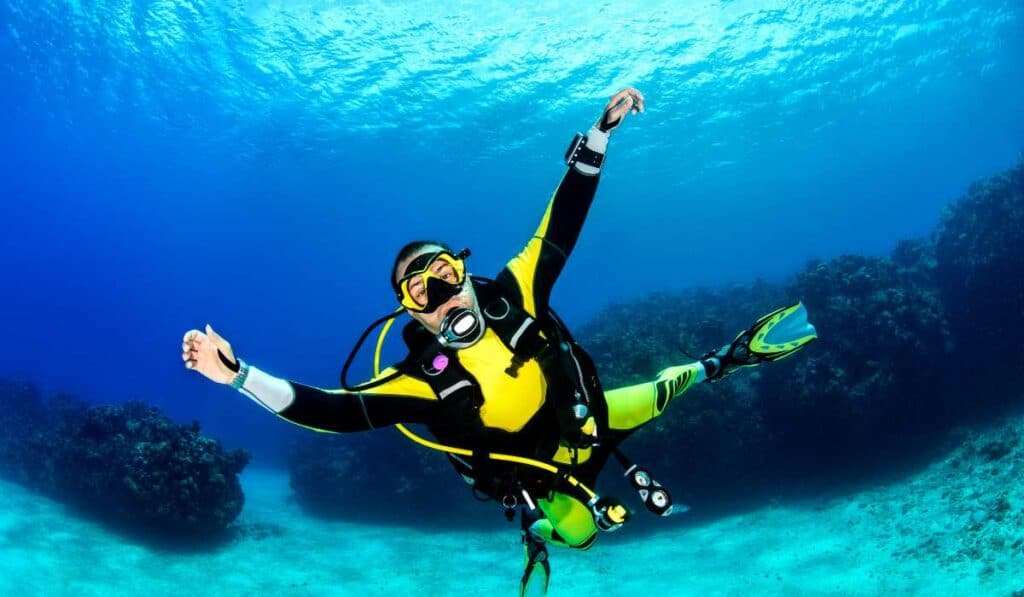
If you’re ready to take the plunge and become a certified scuba diver, it’s essential to know the process involved in obtaining your certification. Scuba diving is an exciting sport that requires proper training and knowledge of safety procedures before venturing into the underwater world.
A. Choosing a Certification Agency
The first step in becoming a certified scuba diver is selecting a reputable certification agency. Before making a decision, it is important to research the various standards and course offerings of popular certification agencies such as PADI (Professional Association of Diving Instructors), SSI (Scuba Schools International), and NAUI (National Association of Underwater Instructors). Thoroughly investigate each agency’s criteria and training options prior to settling on one.
B. Completing Required Courses
Once you’ve chosen an agency, it’s time to enroll in their beginner-level courses for scuba diving certification. Most organizations offer two main components: theory-based learning through online or classroom sessions, followed by practical hands-on training with an instructor at local dive sites or pools.
- Theory-Based Learning: This part covers topics such as basic dive physics, physiology related to diving, equipment usage, maintenance tips, planning dives safely using tablets or computers, and environmental considerations when exploring underwater ecosystems.
- Practical Training: Here you’ll practice essential skills like buoyancy control techniques while wearing full gear underwater, mask clearing exercises, and emergency ascent procedures if needed during real-life situations on future dives.
C. Open Water Dives
To complete your certification process successfully after finishing all the coursework requirements above, you’ll need to participate in a series of open water dives under the supervision of your instructor. These dives will take place at various locations, allowing you to apply and demonstrate the skills learned during your training sessions.
D. Obtaining Your Certification Card
Congratulations. After successfully completing all required courses and open water dives, you’ll be issued a certification card from your chosen agency as proof that you’re now an officially certified scuba diver. This card allows you access to dive sites around the world within limits specified by each organization based on their respective standards (e.g., maximum depth allowed).
Obtaining a scuba certification is an electrifying voyage packed with novel encounters and tests during the process. By following these steps diligently, taking safety precautions seriously, and continuously learning through advanced courses or workshops offered by different agencies over time, there’s no limit to how far underwater adventures can take us.
Key Takeaway:
To become a certified scuba diver, one must choose a reputable certification agency and complete both theory-based learning and practical training. After participating in open water dives under the supervision of an instructor, successful completion results in obtaining a certification card allowing access to dive sites around the world within limits specified by each organization based on their respective standards.
Click here to read about Best Spots for Scuba Diving in California
4. Choosing Locations for Beginners
If you’re new to scuba diving, it’s essential to choose the right location for your first dive. Beginner-friendly spots typically have calm waters, good visibility, and a variety of marine life to explore. In this section, we’ll showcase some of the most ideal locations for beginner divers around the world.
A. The Caribbean
The Caribbean is known for its warm turquoise waters and abundant marine life – making it an ideal destination for beginner divers. Some popular spots include:
- Bonaire: This Dutch island boasts over 80 dive sites with easy shore access and shallow reefs teeming with colorful fish.
- Cayman Islands: With crystal-clear water and minimal currents, these islands offer excellent conditions for beginners looking to experience vibrant coral gardens and diverse aquatic species.
B. Southeast Asia
Southeast Asia offers numerous diving destinations suitable for novices due to their warm tropical climate, clear waters, and rich biodiversity. Here are two top picks in the region:
- Koh Tao, Thailand: Known as one of the most affordable places in the world to get certified in scuba diving, Koh Tao features shallow bays perfect for learning basic skills while admiring stunning coral formations.
- Gili Islands, Indonesia: These three small islands near Bali provide a serene environment with gentle currents where beginners can swim alongside turtles amidst lush coral gardens.
C. Australia and the South Pacific
The vast region of Australia and the South Pacific offers a variety of diving experiences suitable for beginners, including:
- Great Barrier Reef, Australia: As one of the world’s most famous dive sites, this UNESCO World Heritage site is home to countless beginner-friendly spots where you can encounter colorful corals and diverse marine life.
- Fiji: Known as “The Soft Coral Capital of the World,” Fiji’s calm waters make it an excellent destination for novice divers seeking vibrant underwater landscapes.
Other places that are suitable for new divers to explore abound in the world. Be sure to consult with your local dive center or instructor for recommendations tailored to your skill level and interests.
Choosing locations for beginners is an important step in getting started with scuba diving. Finding the ideal place to initiate your aquatic voyage requires knowledge and readying. Now let’s move on to selecting gear and equipment that will ensure a safe and enjoyable dive experience.
Key Takeaway:
For novice divers, Bonaire and Cayman Islands in the Caribbean, Koh Tao in Thailand, Gili Islands in Indonesia, Great Barrier Reef in Australia, and Fiji are some of the most ideal destinations for scuba diving. It emphasizes that novice divers should choose beginner-friendly spots with calm waters, good visibility, and a variety of marine life to explore.
5. Selecting Gear and Equipment
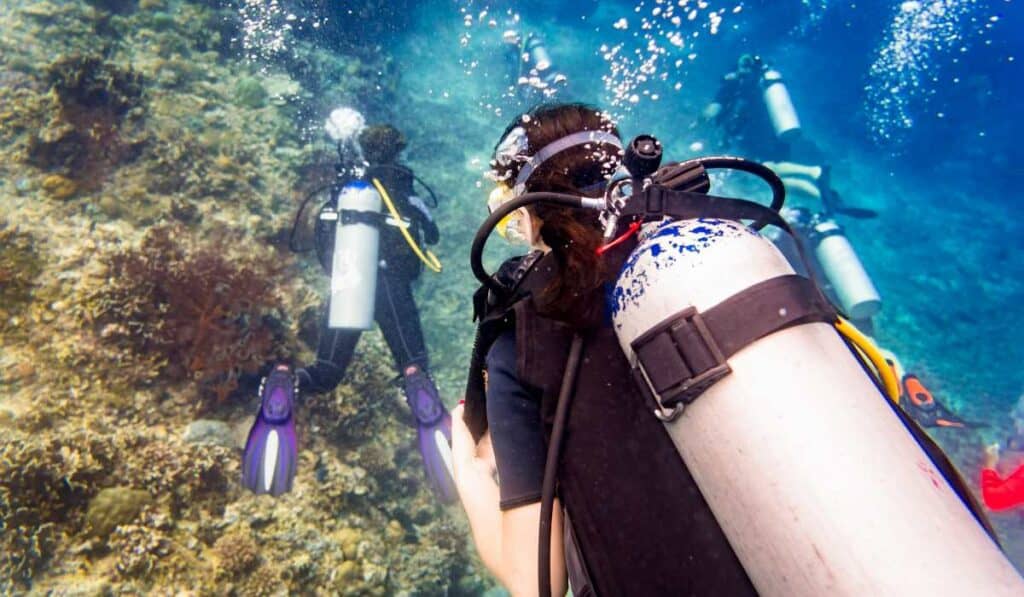
As a novice scuba diver, having the appropriate apparatus and gear is critical for both your protection and pleasure underwater. While it might be tempting to save money by purchasing cheap or used gear, investing in quality equipment will ensure you have a comfortable and safe diving experience. In this section, we’ll discuss the key pieces of scuba gear that every beginner should consider.
A. Basic Scuba Diving Gear
- Dive Mask: A good-quality dive mask provides clear vision underwater while keeping water out of your eyes. Look for one with tempered glass lenses and a silicone skirt that fits comfortably on your face. To learn more about picking the ideal dive mask, check out ScubaDiving.com for tips and advice.
- Snorkel: Although not required for scuba diving itself, snorkels are useful when swimming on the surface before descending or during surface intervals between dives.
- Fins: Fins help propel you through the water efficiently while using minimal energy from your legs. Choose fins designed specifically for scuba diving rather than those meant for snorkeling or free-diving.
- Wetsuit/Exposure Suit: Your wetsuit keeps you warm in cold waters by trapping a thin layer of water against your skin which heats up from body temperature. For colder conditions, dry suits provide better insulation and keep you completely dry.
B. Essential Scuba Diving Equipment
- Regulator: The regulator is the most critical piece of equipment as it delivers air from your tank to your mouth. Ensure that you invest in a high-quality, reliable regulator for safety and comfort during dives.
- Buoyancy Control Device (BCD): A BCD helps maintain neutral buoyancy underwater by allowing you to add or release air from an inflatable bladder. As a beginner, look for one with integrated weight pockets and adjustable straps for maximum comfort.
- Dive Computer: Dive computers track important information such as depth, dive time, ascent rate, and no-decompression limits. They are essential tools for ensuring safe diving practices.
- Tank & Weights: Tanks hold the compressed air needed for breathing underwater while weights help counteract buoyancy created by wetsuits or drysuits. Most dive centers provide tanks and weights as part of their rental packages.
In addition to these basic gear items, consider investing in accessories like a surface marker buoy (SMB), whistle or signaling device, mesh bag for carrying gear on boats or at dive sites, and defog solution to prevent mask fogging during dives. Remember that proper maintenance of your scuba gear is crucial; always rinse off saltwater after each use and store them properly when not in use.
Picking the right apparatus and gear for scuba diving is essential to guarantee a secure and pleasurable experience. For a successful scuba diving experience, it is critical to be aware of the possible risks and plan accordingly.
Key Takeaway:
New divers should acquire top-notch apparatus and paraphernalia to guarantee a secure and pleasant diving experience. Basic gear includes a dive mask, snorkel, fins, and wetsuit or exposure suit. Essential equipment includes a regulator, BCD, dive computer, tank & weights while accessories like an SMB and defog solution can enhance the overall experience.
Click here to read about Discover the Best Scuba Diving Fins
6. Navigating Underwater Hazards
Navigating underwater hazards is an essential part of scuba diving, and here we’ll explore how to stay safe while enjoying the exhilarating experience. By learning about the potential risks of scuba diving, we can ensure a safe and enjoyable experience.
A. Strong Currents
Strong currents can make navigating underwater challenging for beginners. To stay safe in these conditions:
- Maintain a streamlined body position to reduce drag.
- Stay close to the bottom or other structures that offer protection from the current.
- If caught in a strong current, swim diagonally across it rather than fighting against it directly.
B. Marine Life Encounters
While encountering marine life is one of the highlights of scuba diving, some creatures can pose risks if not treated with respect. Remember:
- Avoid touching or disturbing any marine life; observe from a distance instead.
- If you come across potentially dangerous animals like sharks or stingrays, remain calm and maintain your distance without making sudden movements.
C. Poor Visibility Conditions
Poor visibility can make navigation difficult and increase the risk of accidents underwater. To manage low-visibility situations:
- Familiarize yourself with local dive sites before entering the water so you know what landmarks are available for orientation purposes.
- Dive with a buddy who has experience navigating in poor visibility conditions.
- Incorporate additional safety equipment such as surface marker buoys and dive lights.
D. Decompression Sickness
Decompression sickness (DCS), also known as “the bends,” is a serious risk for scuba divers who ascend too quickly or don’t follow proper decompression procedures. To minimize the risk of DCS:
- Always follow your dive computer’s recommendations for ascent rates and safety stops.
- Drink plenty of fluids prior to, during, and after your dive to reduce the chances of developing DCS.
- Avoid flying or engaging in high-altitude activities within 24 hours of diving.
By being aware of these underwater hazards and following the recommended safety precautions, you can enjoy a safer scuba diving experience while exploring the wonders beneath the waves.
It is important to understand the potential risks and hazards of underwater navigation, as they can pose a serious threat if not taken seriously. To reach an advanced level of diving, it is imperative to gain proficiency in the dive techniques.
Key Takeaway:
Scuba diving can be dangerous due to strong currents, marine life encounters, poor visibility conditions, and decompression sickness. To stay safe, maintain a streamlined body position in strong currents, avoid touching marine life, and follow proper decompression procedures. Familiarize yourself with local dive sites before entering the water and always dive with a buddy who has experience navigating in poor visibility conditions.
7. Mastering Dive Techniques
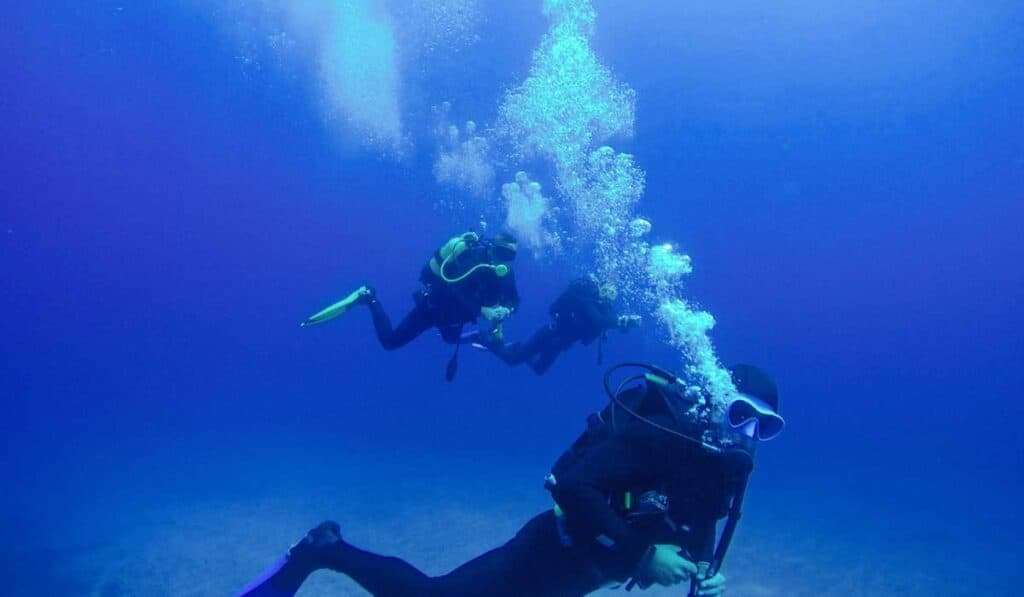
Diving is an exhilarating experience, but it can also be challenging for beginners. To be a proficient and experienced diver, mastering techniques to traverse the underwater environment is essential. In this section, we’ll explore some essential diving skills every beginner should learn.
Proper Breathing Technique
The most crucial skill in scuba diving is proper breathing technique. Unlike on land where we tend to take shallow breaths, underwater breathing requires slow and deep inhalation followed by a complete exhalation. This helps maintain buoyancy control and prevents overexertion while submerged. Check out PADI’s guide on underwater breathing techniques for more information.
Buoyancy Control
Maintaining neutral buoyancy allows divers to hover effortlessly at any depth without sinking or floating upwards unintentionally. This skill not only conserves energy but also protects marine life from accidental damage caused by uncontrolled movements or contact with the seabed. Practice makes perfect when it comes to achieving good buoyancy control – consider enrolling in a specialized buoyancy course.
- Frog Kick: A modified version of the flutter kick that reduces silting and improves maneuverability around delicate coral reefs.
- Helicopter Turn: Allows divers to rotate horizontally using minimal effort while maintaining their position relative to other objects.
- Backward Kick: Enables divers to move backward without turning around – useful for backing away from tight spaces or approaching marine life without startling them.
There are many online resources available to help you learn these advanced techniques, such as Scuba Diver Life’s guide on scuba diving kicks.
Click here to read about Best Watches for Scuba Diving: Time to Dive In
Dive Planning and Communication
Before every dive, it’s essential to plan your route, depth limits, air supply management, and emergency procedures. This ensures a safe and enjoyable experience for all divers involved. Additionally, learning hand signals is crucial for effective underwater communication with your dive buddy or group. Familiarize yourself with the common scuba hand signals before embarking on your first dive.
Practicing these basic dive techniques will not only improve your overall diving experience but also guarantee that you become a conscientious diver who appreciates the underwater world and its creatures. Remember that practice makes perfect – so keep honing those skills during each dive.
Key Takeaway:
To become a skilled scuba diver, beginners need to master various dive techniques such as proper breathing and buoyancy control. Advanced techniques like the frog kick, helicopter turn, and backward kick can improve maneuverability around delicate coral reefs. Dive planning and communication are also crucial for safe underwater experiences.
Conclusion
By engaging in scuba diving, you can experience the wonders of the underwater world while learning to navigate its potential risks and mastering techniques. In this beginner’s guide, we have covered important topics such as understanding scuba diving costs, assessing risks and safety, getting certified, choosing locations for beginners, selecting gear and equipment, navigating underwater hazards, and mastering dive techniques. By following the advice in this guide, you can savor your scuba diving journey while uncovering the magnificence of our planet’s seas.

